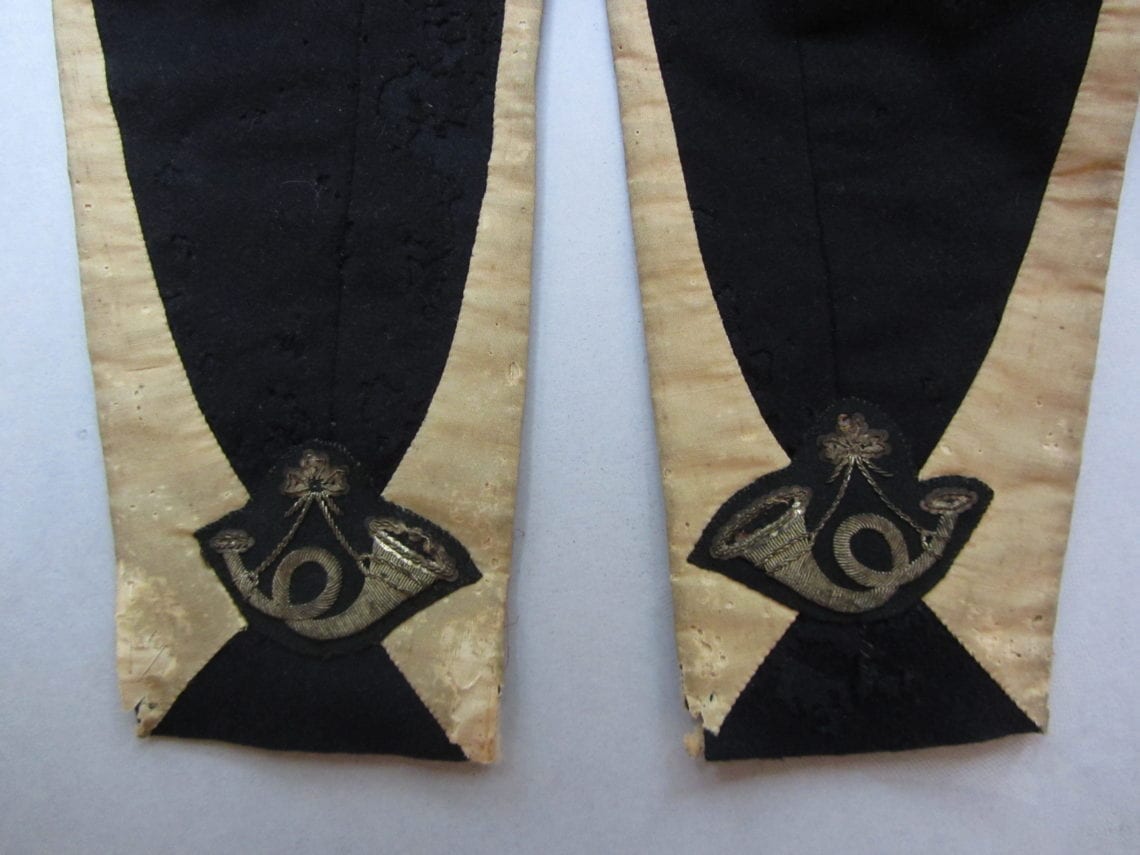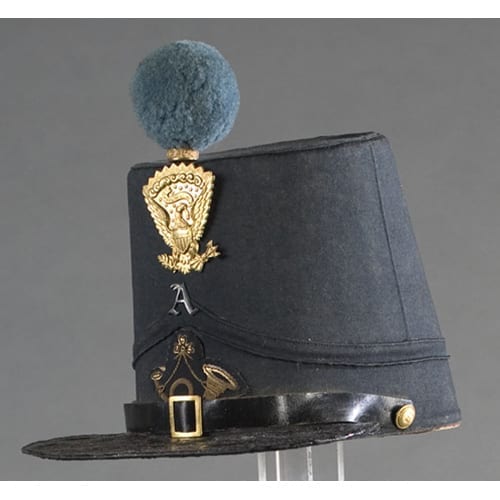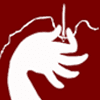By Kaitlyn Munro
Even after working a long time—and intimately on a textile—there are often new and fascinating discoveries. We are nearing the completion of an extensive conservation treatment of an 1832 US Infantry Officer’s dress coatee. And here is what we found: At the bottom of the coat tails, there are a pair of lovely embroidered tail badges, depicting a hunting horn.
While looking into this symbology we found:
“The original insignia used for infantry by the U.S. Army was not the familiar crossed rifles but the hunting horn. This was borrowed from the European armies, where it was used as an insignia for light infantry or rifle units. Those troops were often recruited from huntsmen and the horn was symbolic of the hunt. These first appeared as an individual U.S. Army insignia on the infantry cap (shako) of 1832. These were of an earlier style with the horn dangling from a tassel that was likely inspired by British light infantry units and identical to the one used by the British Oxfordshire and Buckinghamshire Light Infantry Regiment. The same design was used as an officer’s skirt-tail ornament on the back of the tailed coats worn prior to the introduction of the frock coat. The more familiar style of the infantry horn, used extensively during the Civil War, first appeared on officer’s forage cap bands in 1839.” [Source info can be found here.]
One of the embroidered tail badges was separating from the tail, allowing further inspection. The investigation yielded that it is made up of several different elements; metal spangles, metal bullion, Navy wool backed with a layer of buckram (linen with stiffener) and a little layer of printed paper in French!
Though the current research is inconclusive, it is possible that the tail badge applique was embroidered and manufactured in France and sent to America for use on our uniforms.
 Further research comparing other uniforms with this same hunting horn applique from the early 1800’s yielded the same exact 1832 infantry badge used on an 1851 Shako sold by Cowan’s Auctions. It appears that the infantry badge was removed from an old 1832 Shako and put on this new 1851 Shako.
Further research comparing other uniforms with this same hunting horn applique from the early 1800’s yielded the same exact 1832 infantry badge used on an 1851 Shako sold by Cowan’s Auctions. It appears that the infantry badge was removed from an old 1832 Shako and put on this new 1851 Shako.
Hmmmm….. wonder if another bit of French printed paper might be lurking beneath the badge!

Fascinating!! Great research.
Yes, such finds are so exciting. We once found two small decorative hanging panels from a canopy that had been made from a news paper that had been cut to make the pattern and then the material was sown around it but the newspaper had not been removed. The panels were part of a Sumatran wedding canopy but the newspaper was The Straits Times from 1917 which was a newspaper from Malaya. It was really exciting being able to date the panels exactly.
This is very cool!
Bnj je suis très contente de recevoir vos travaux